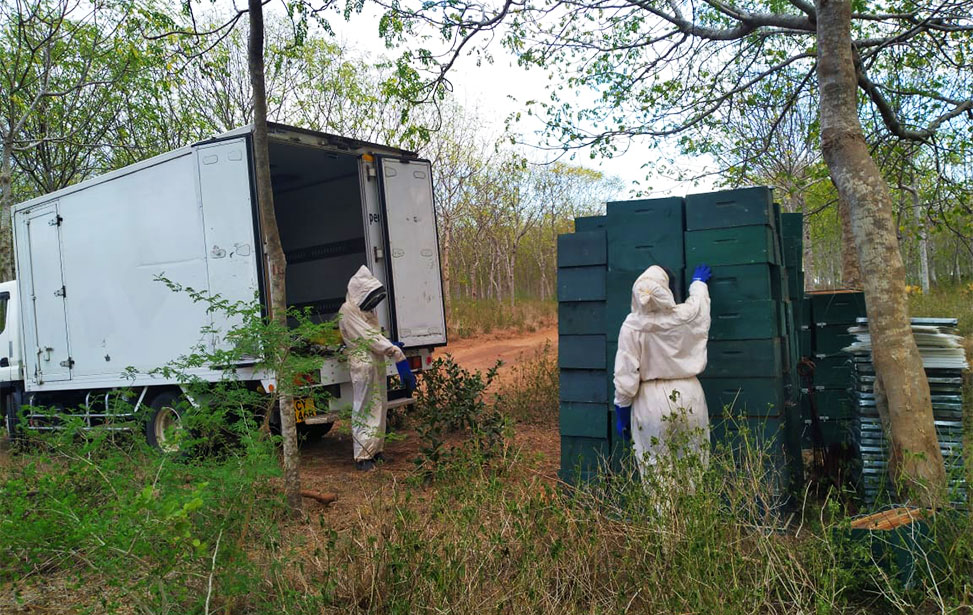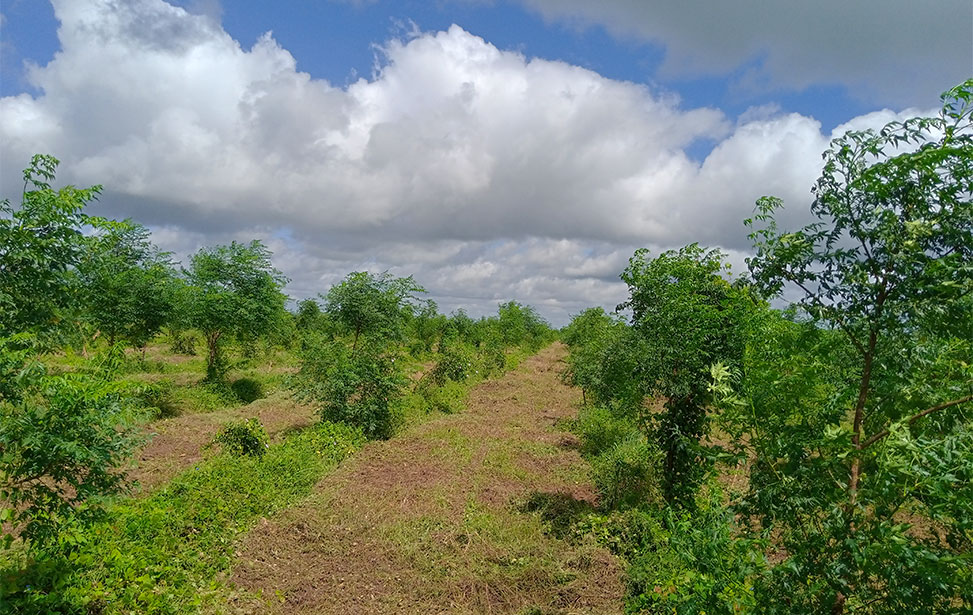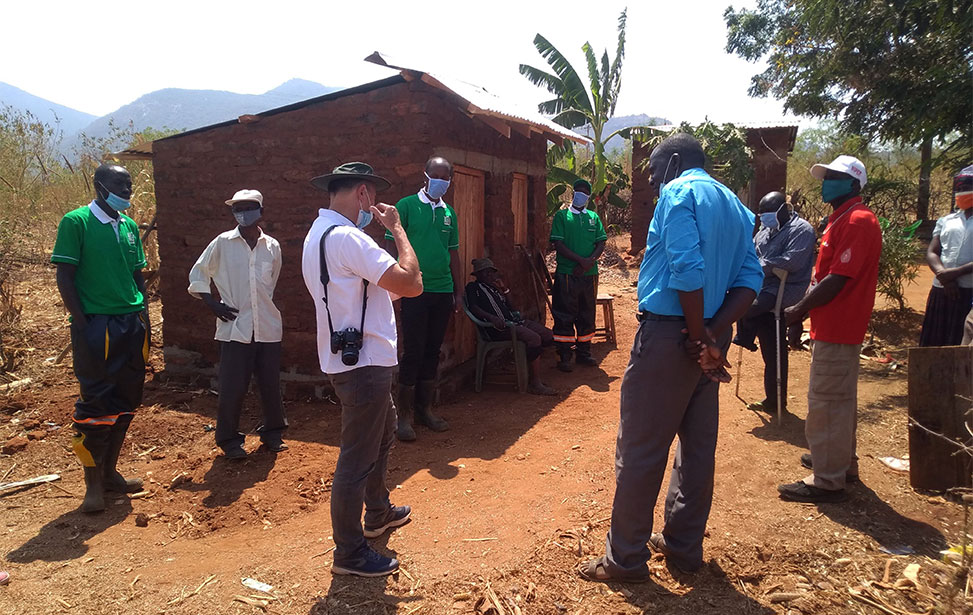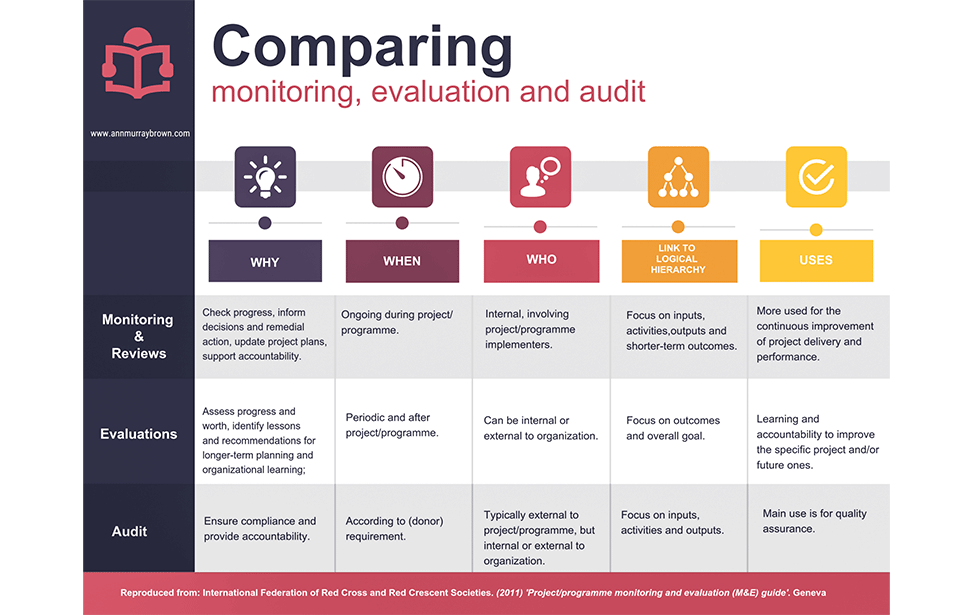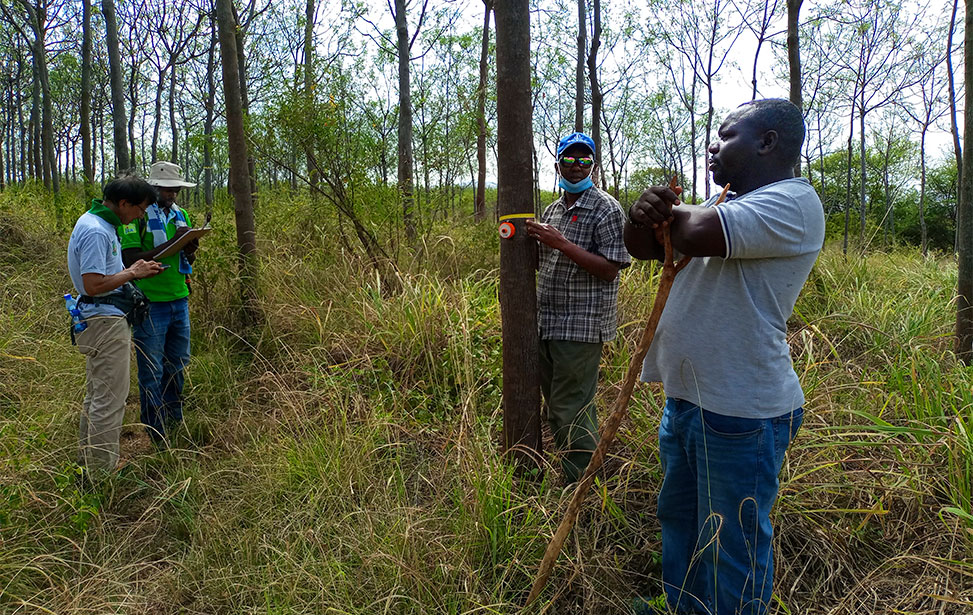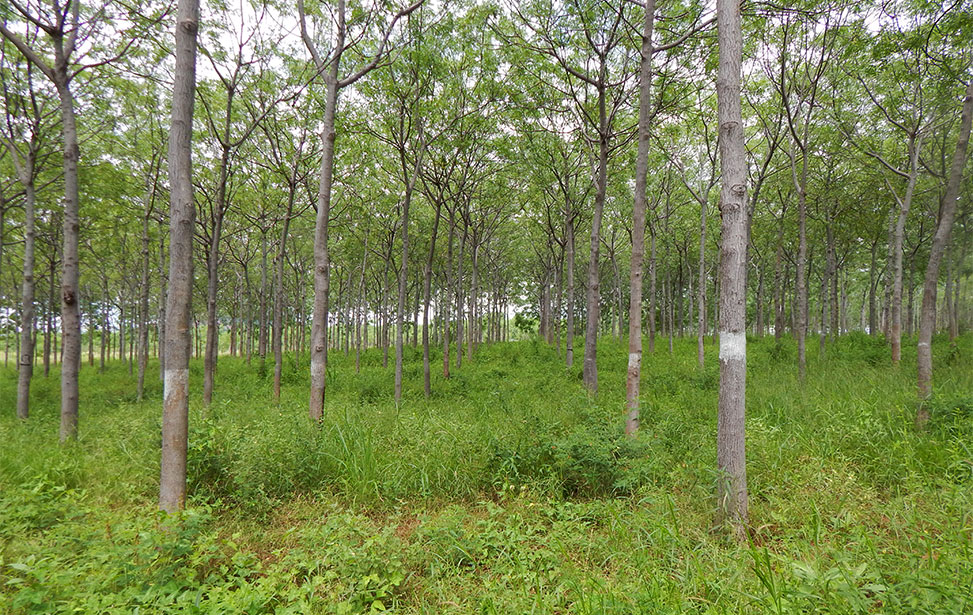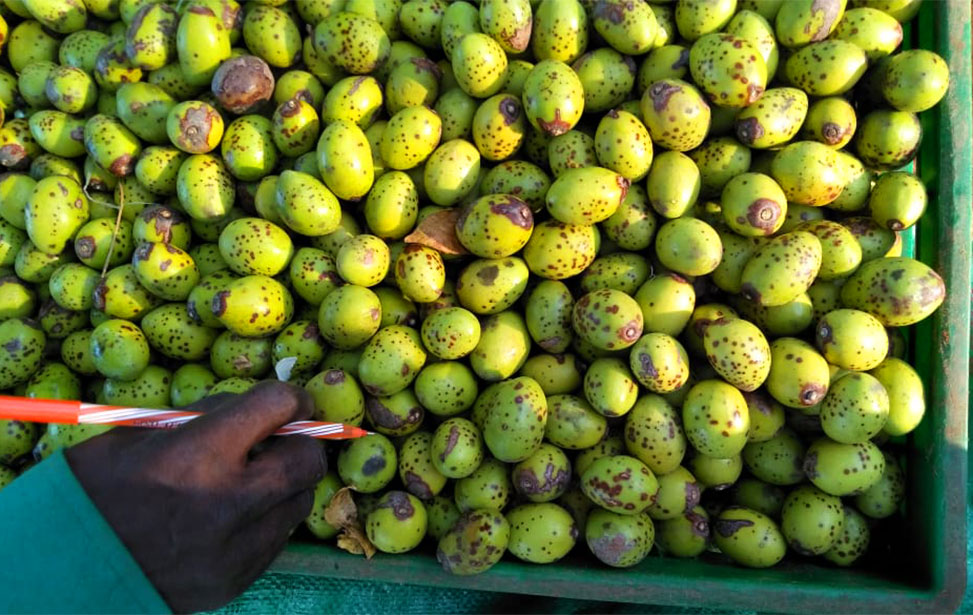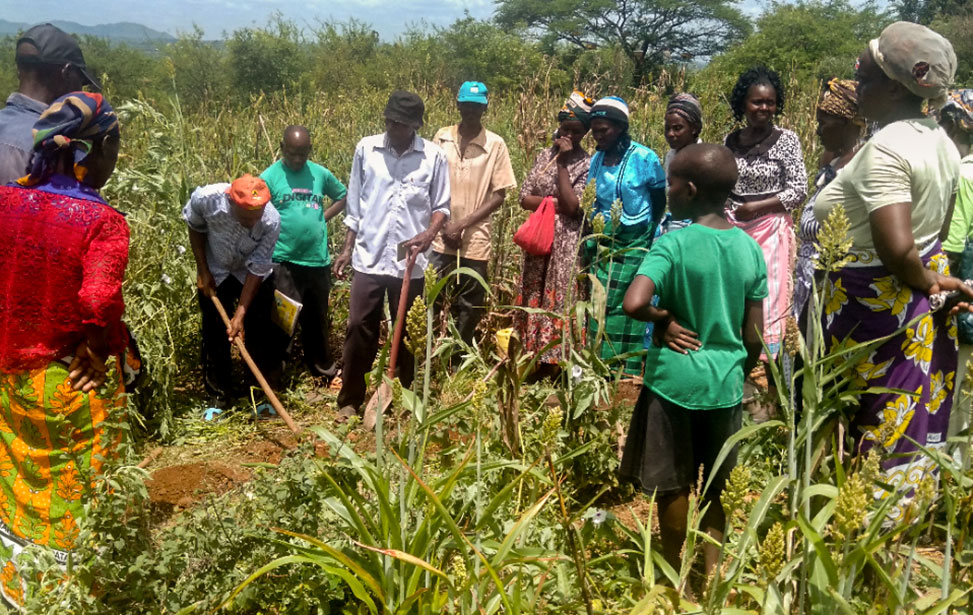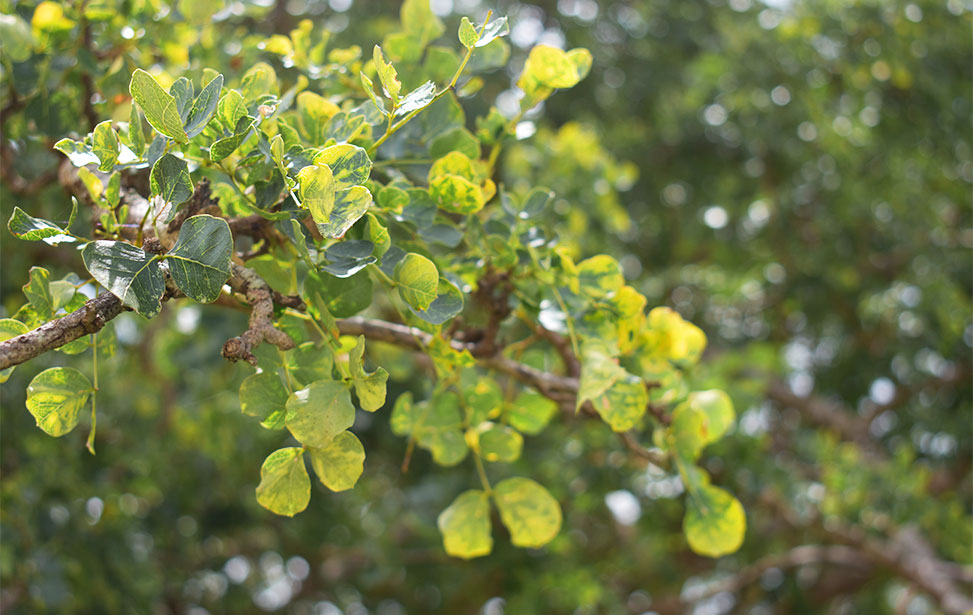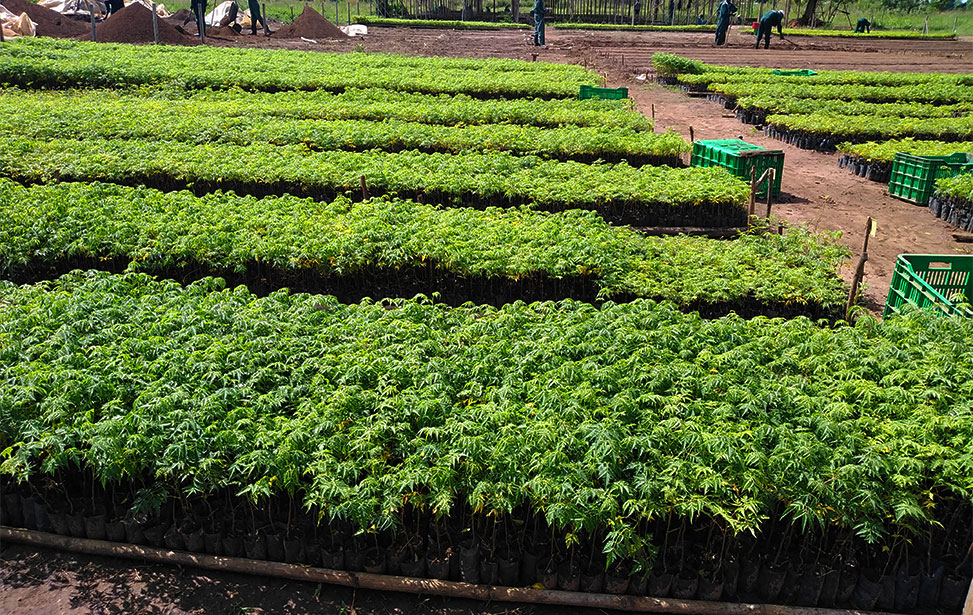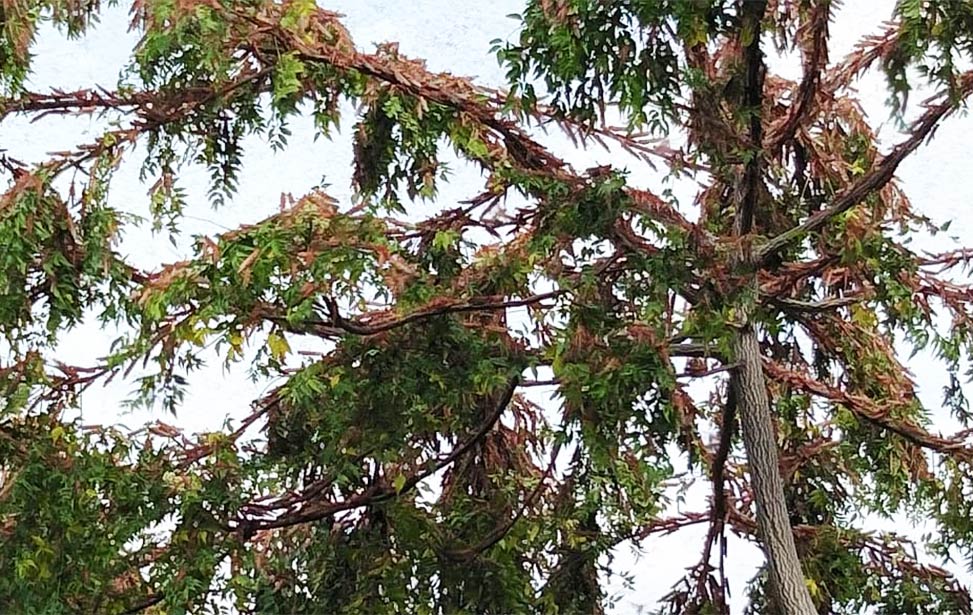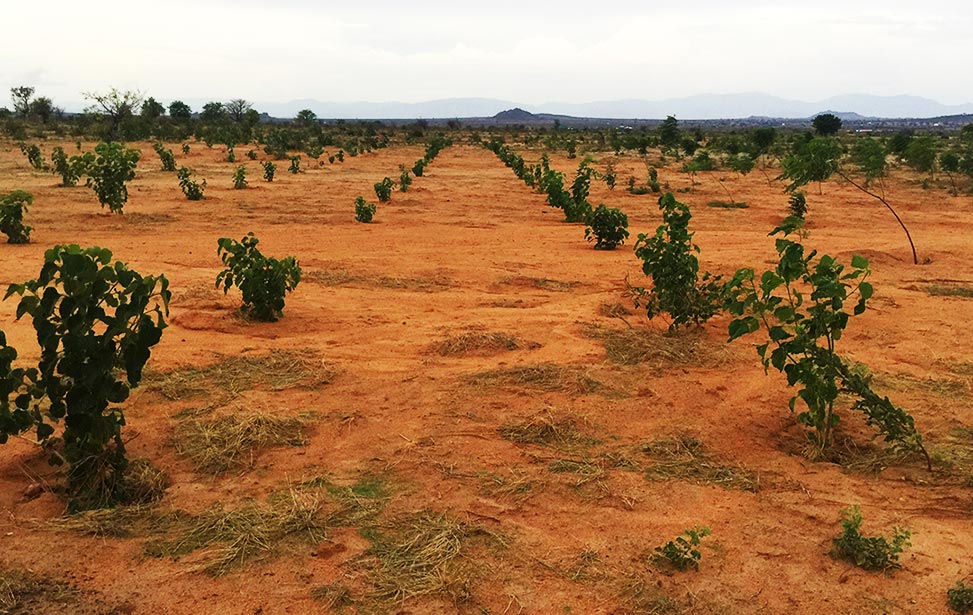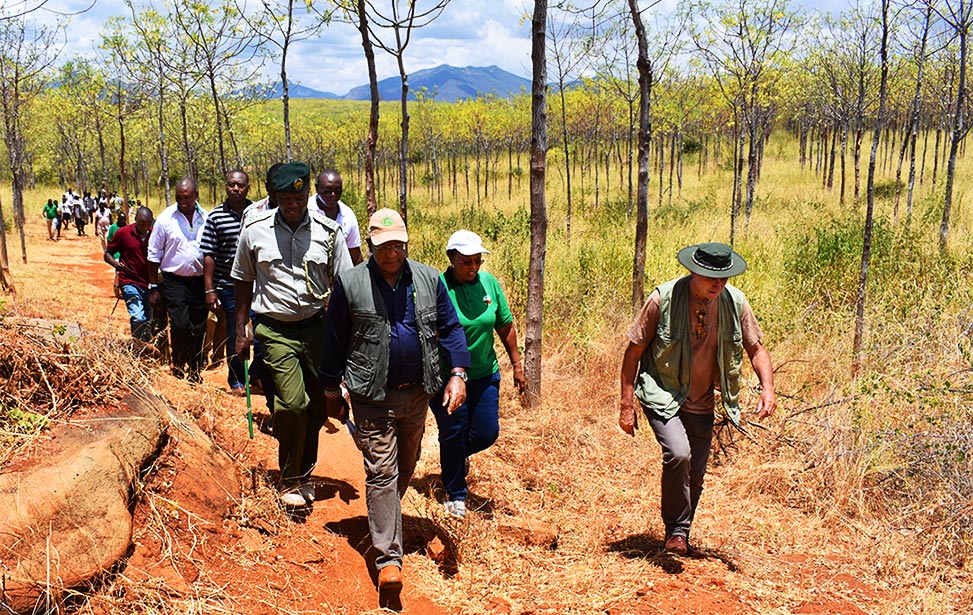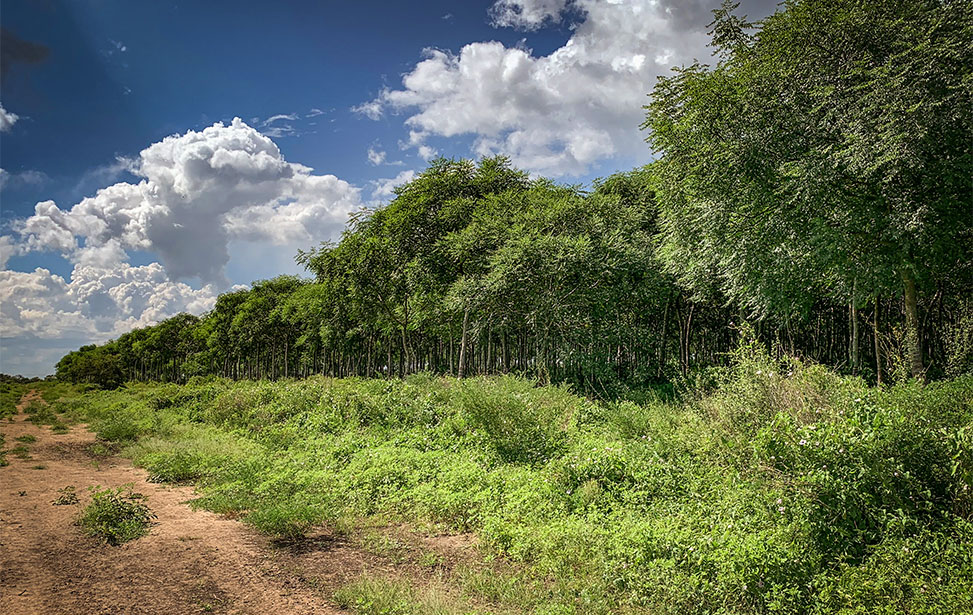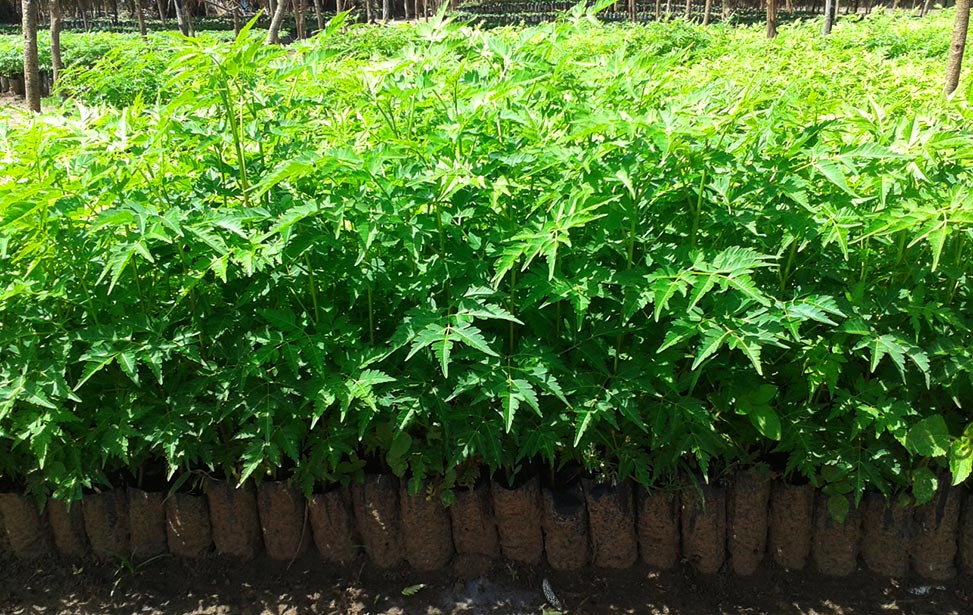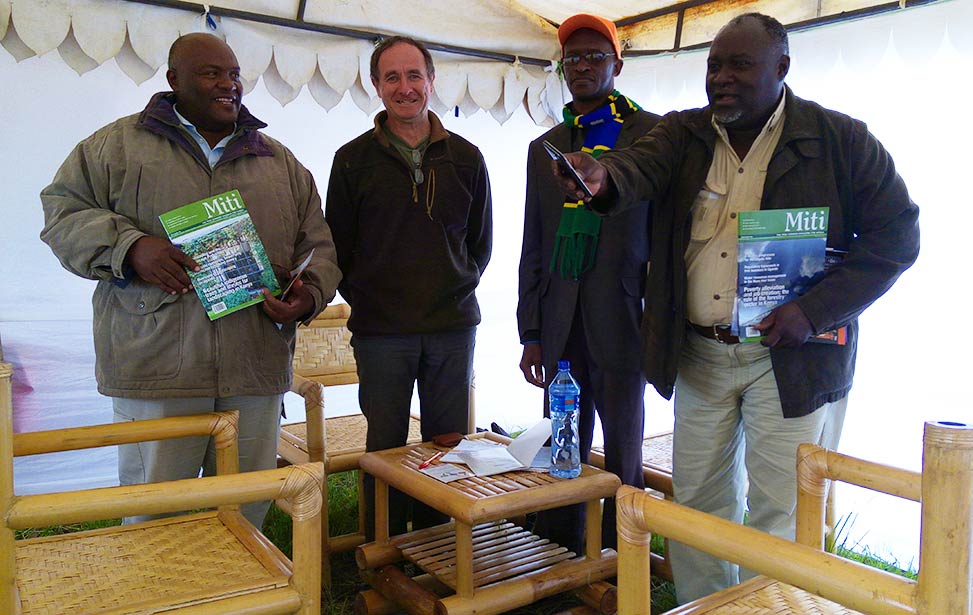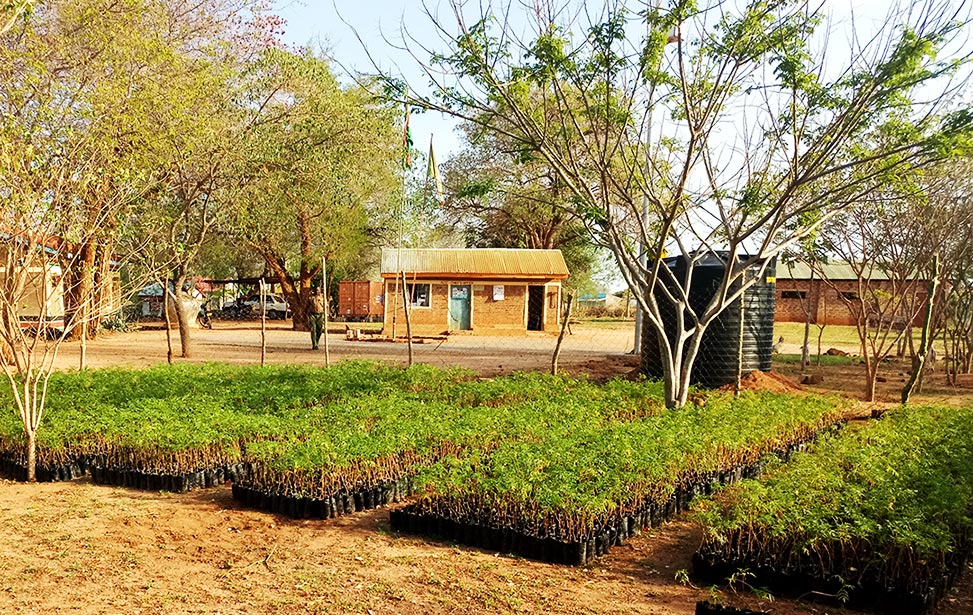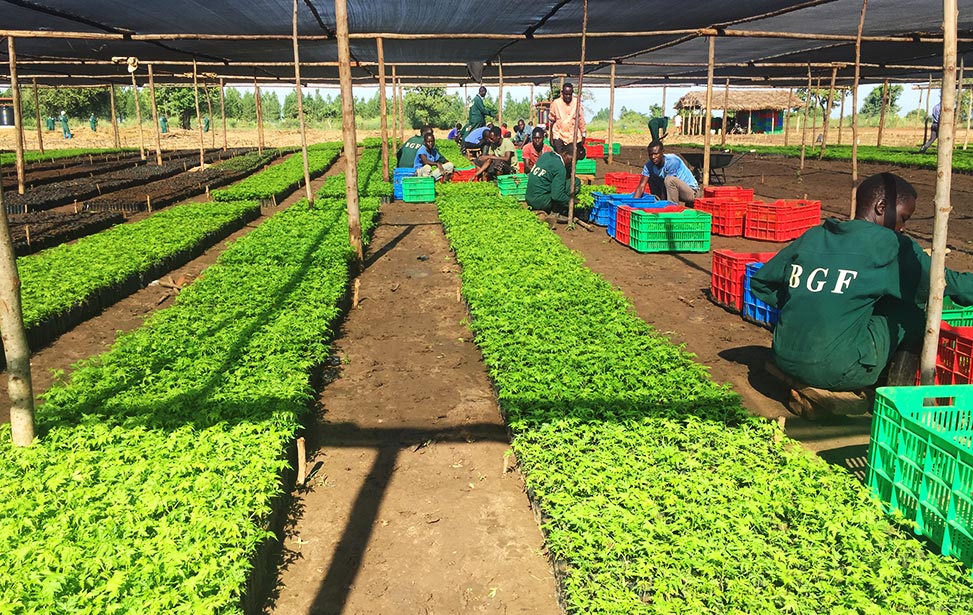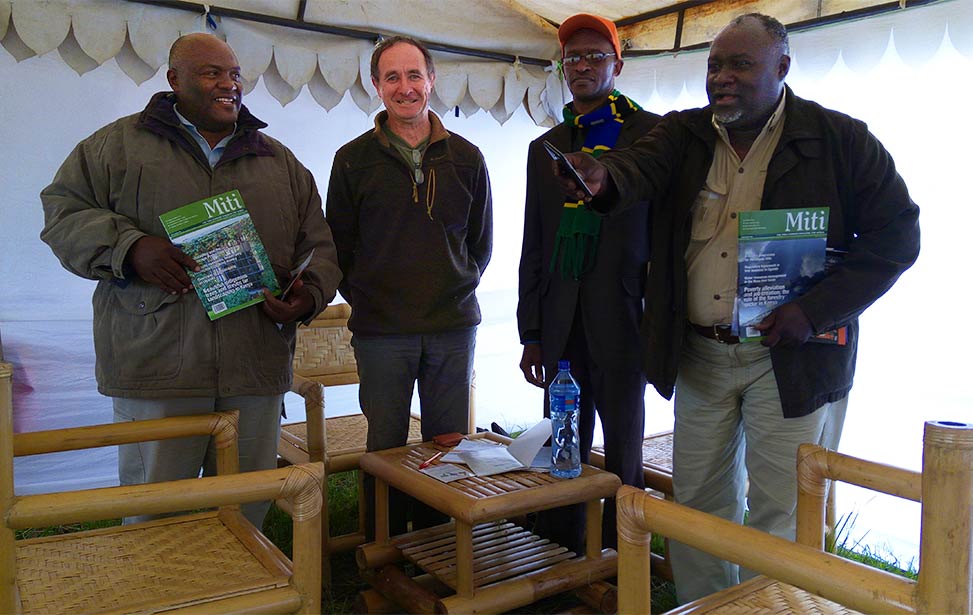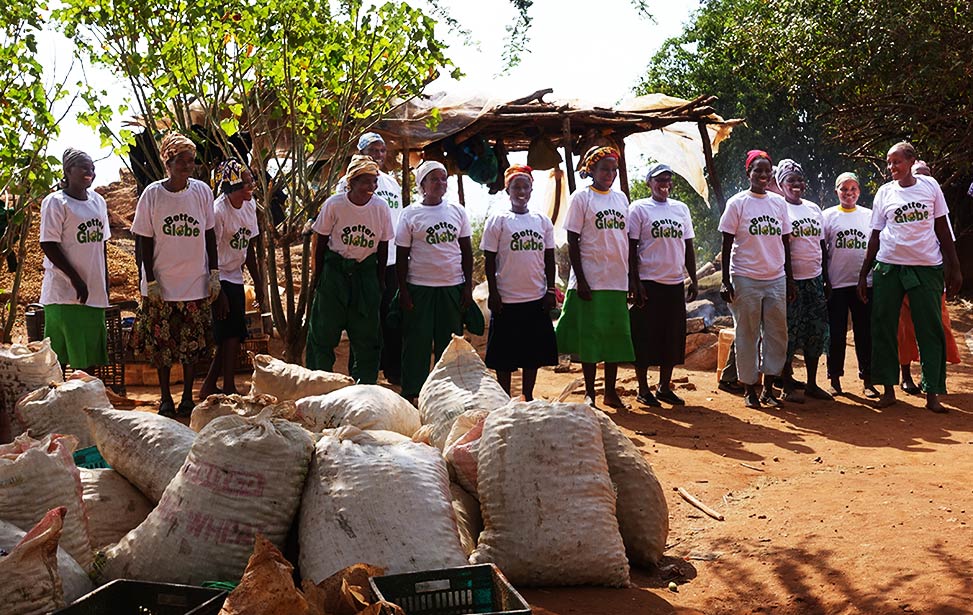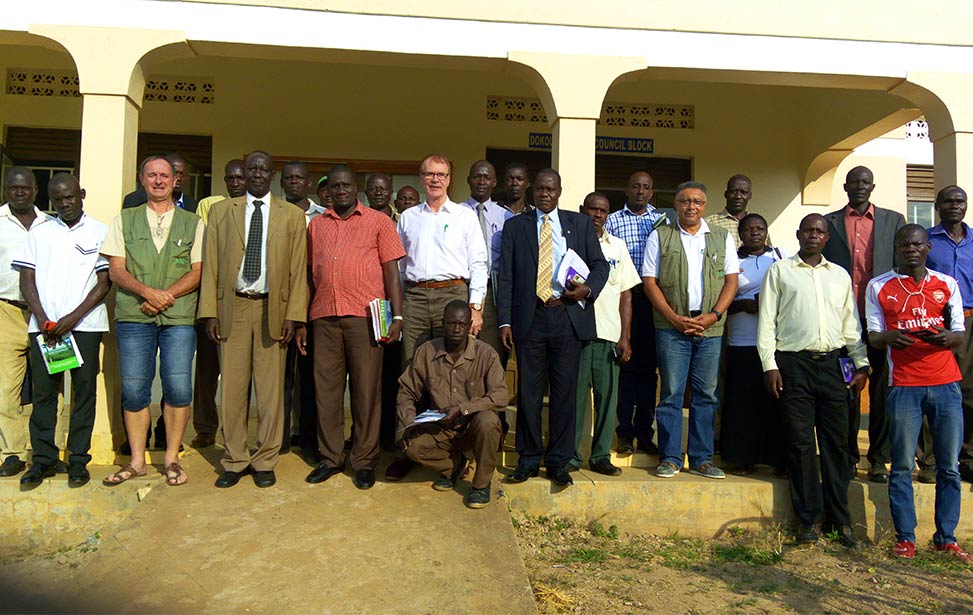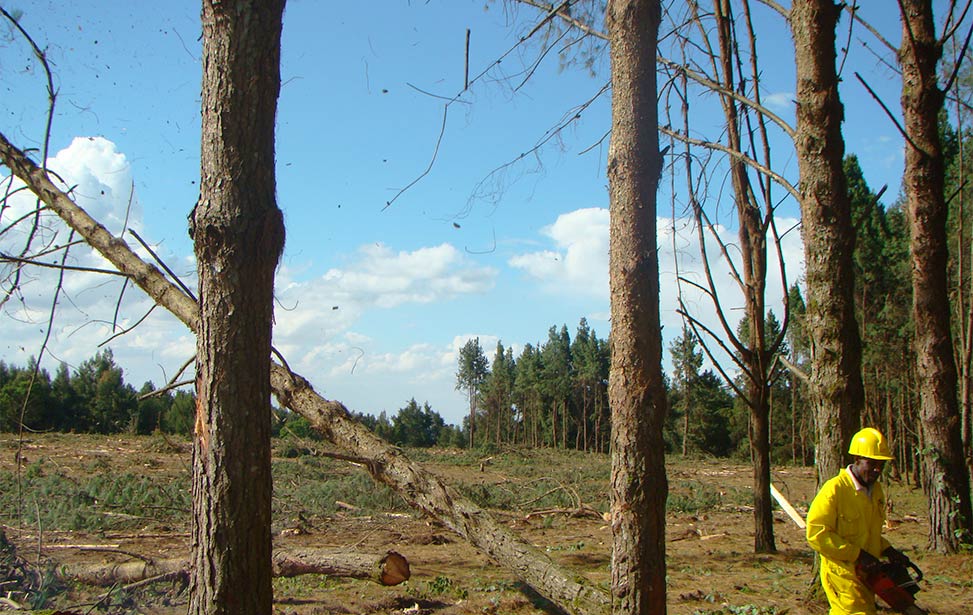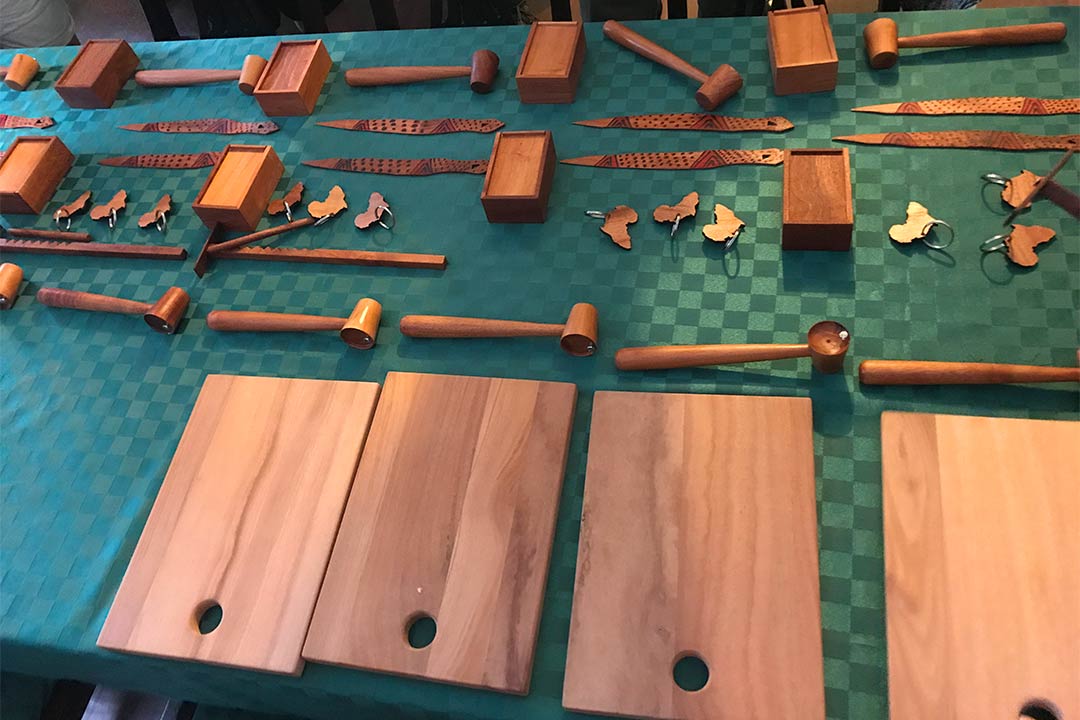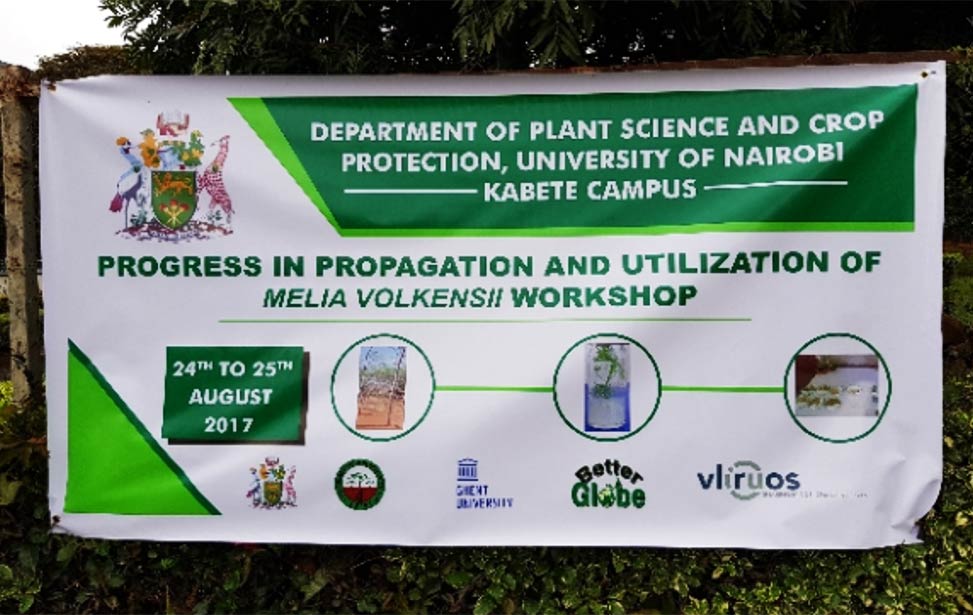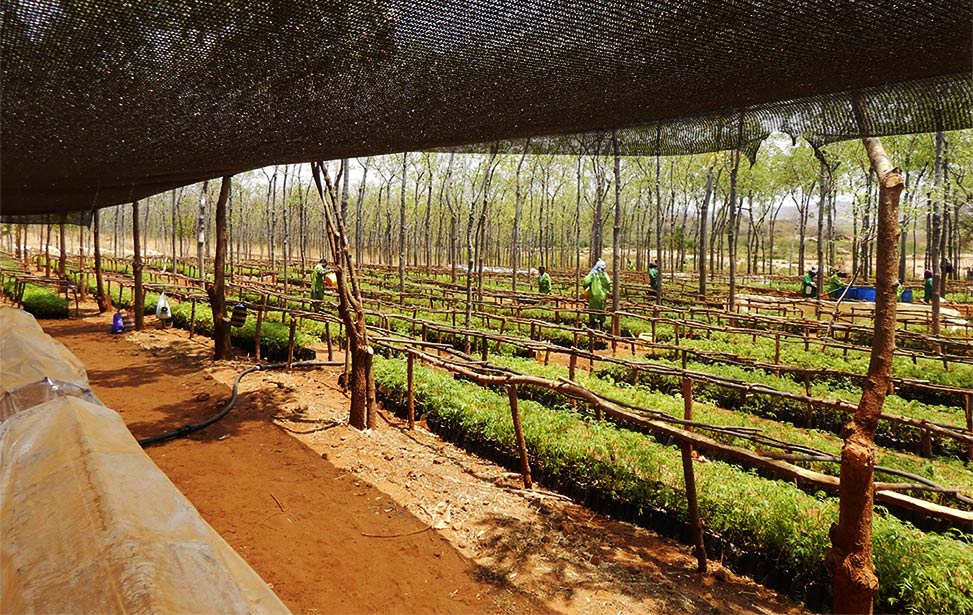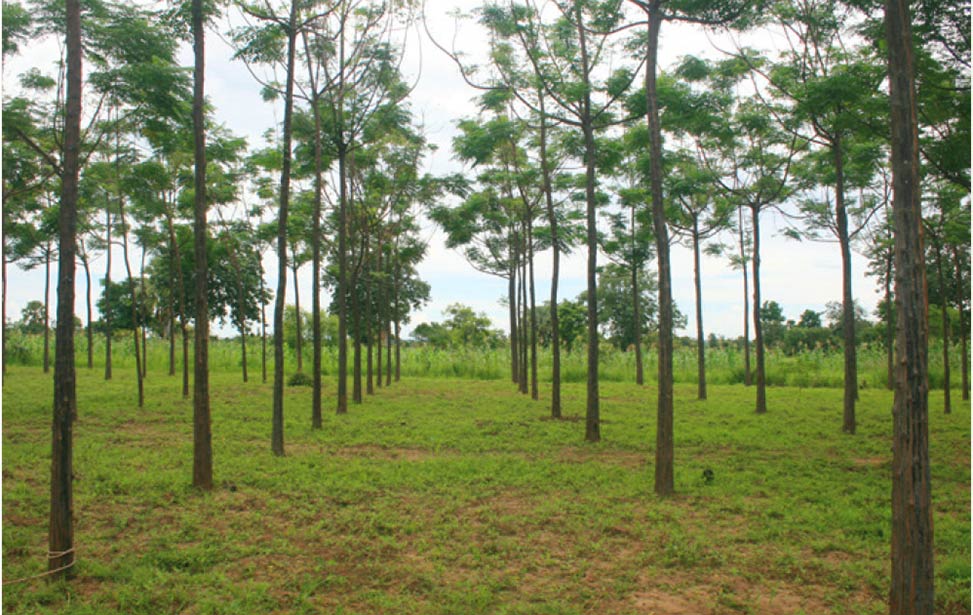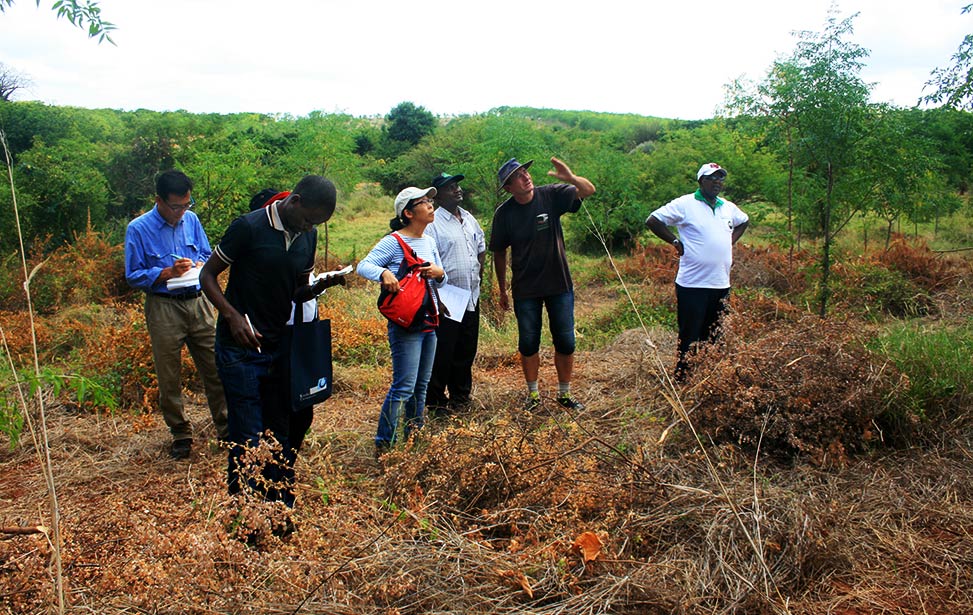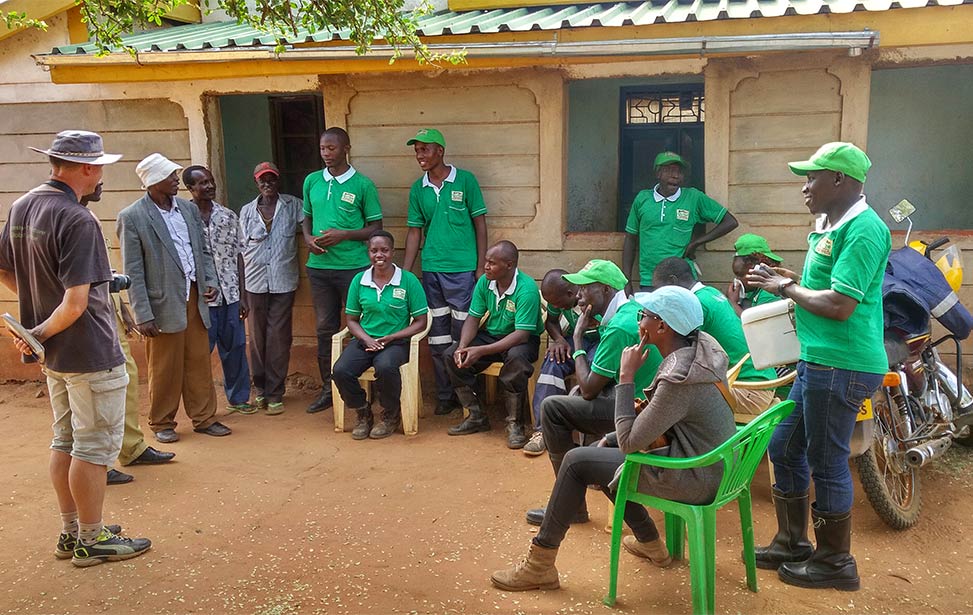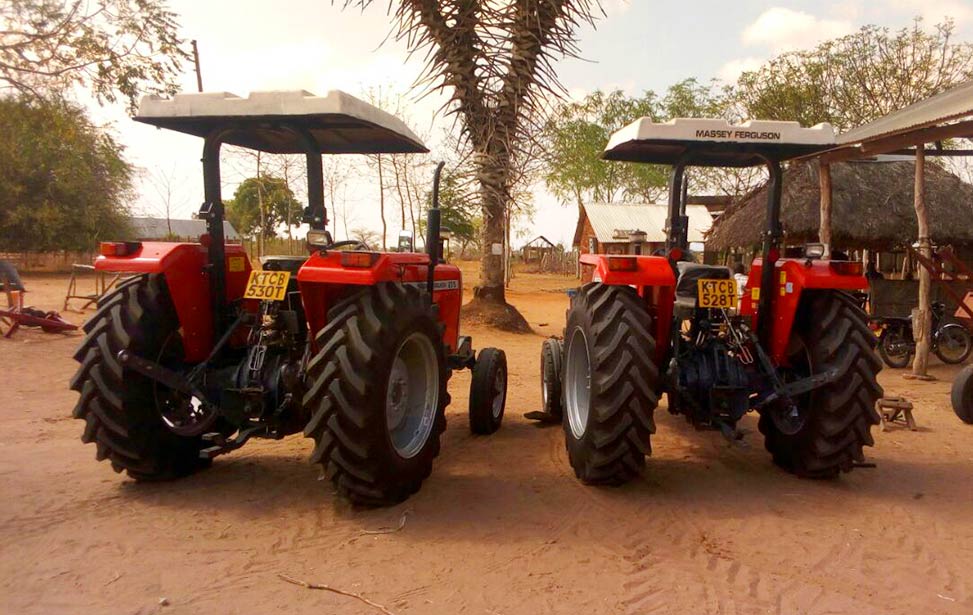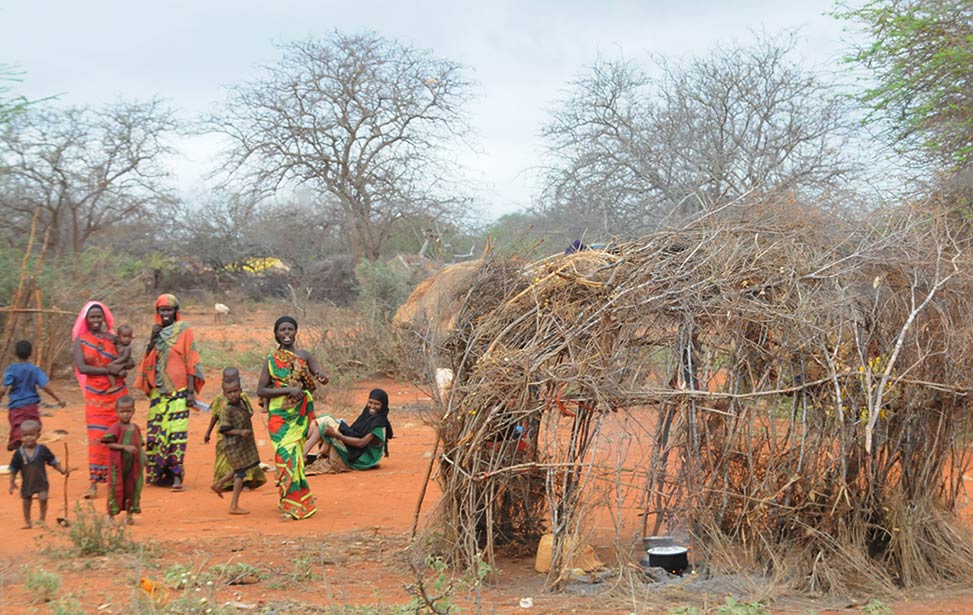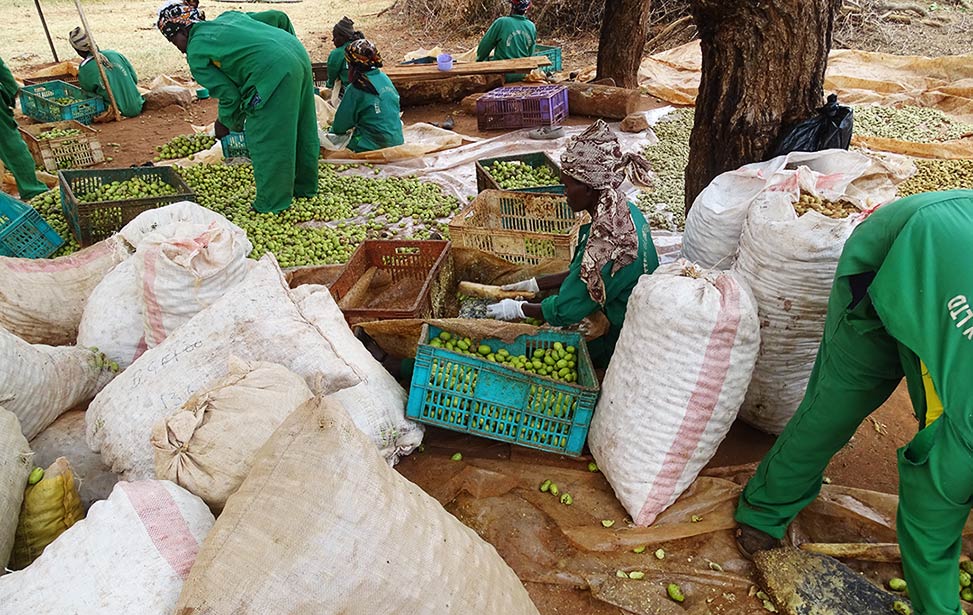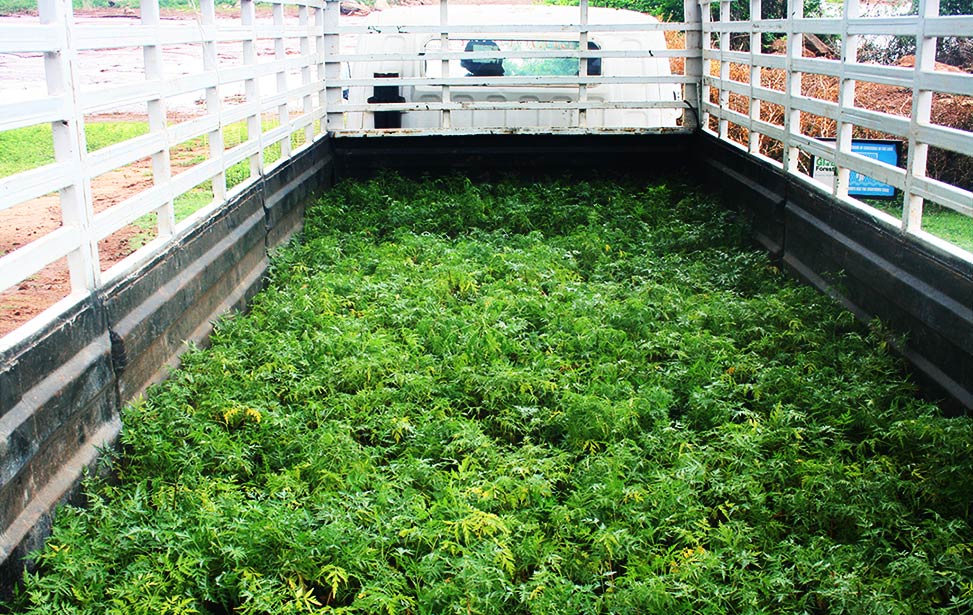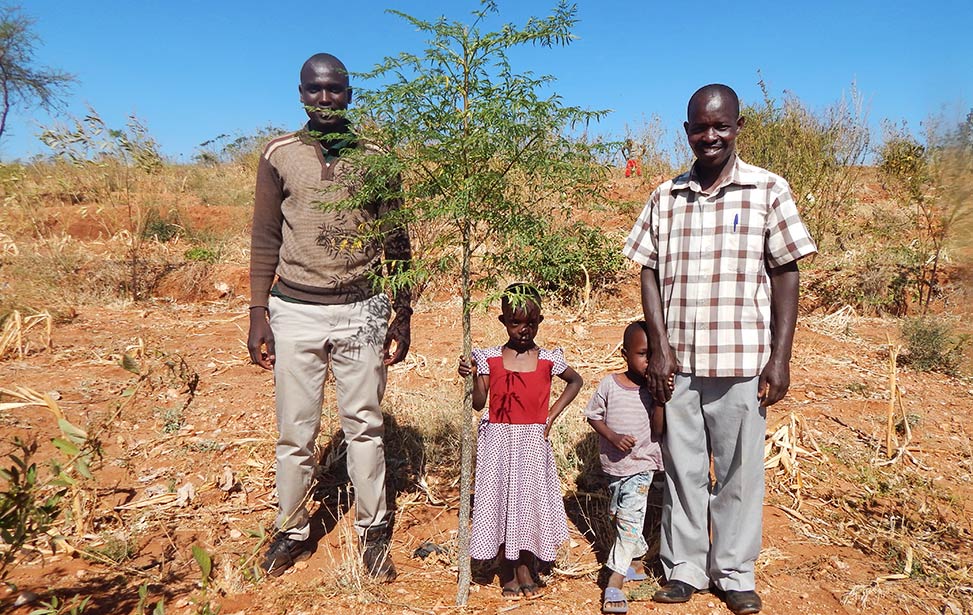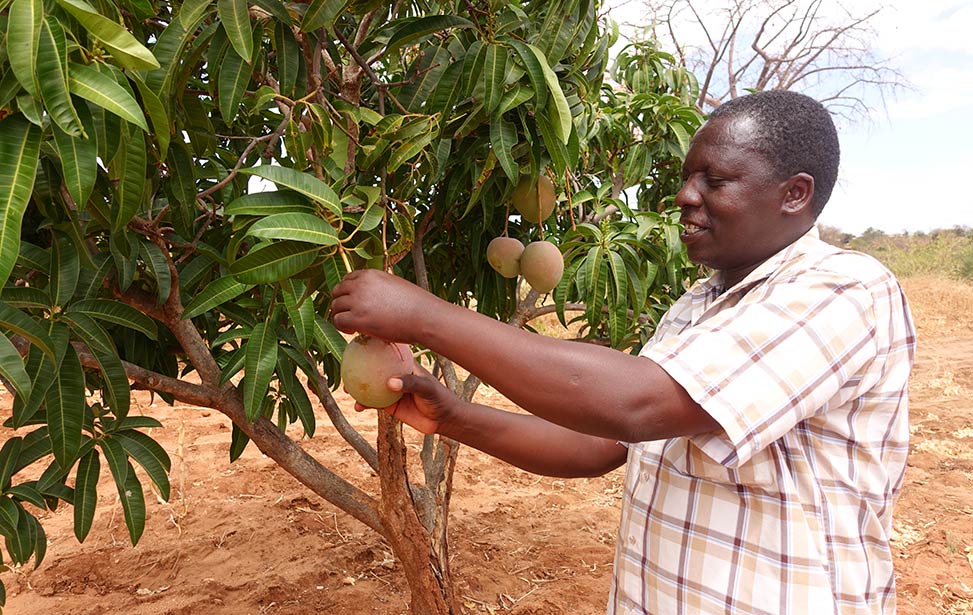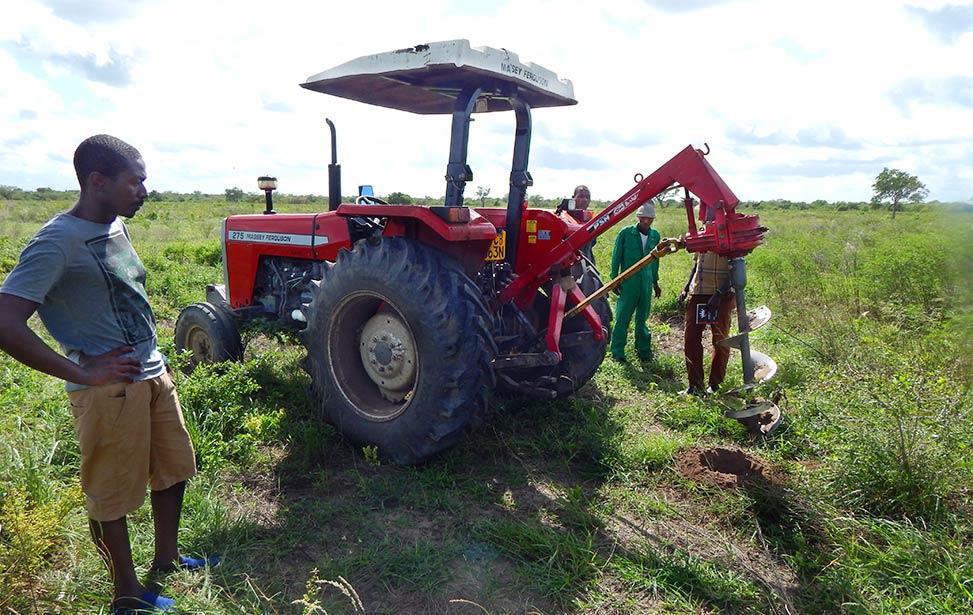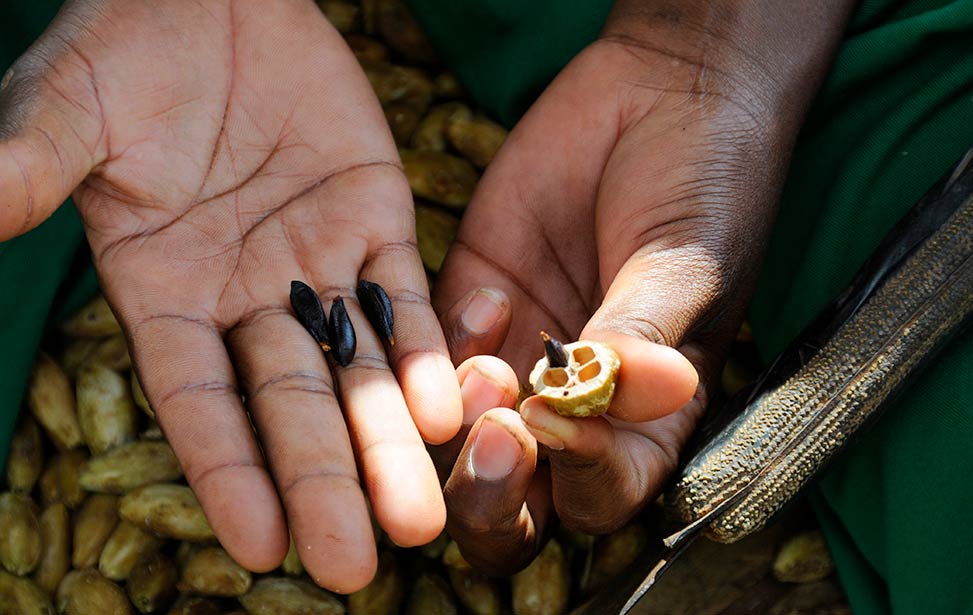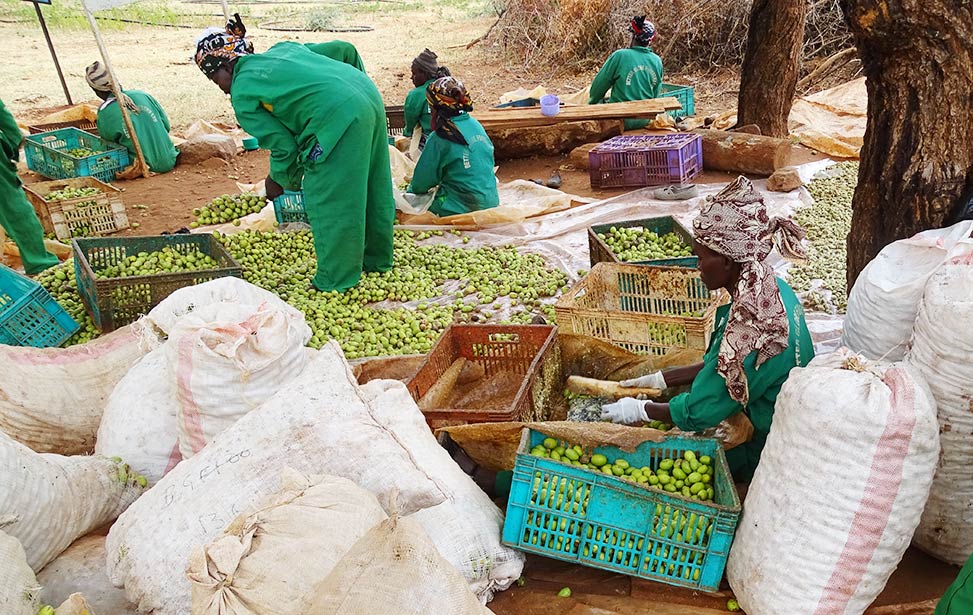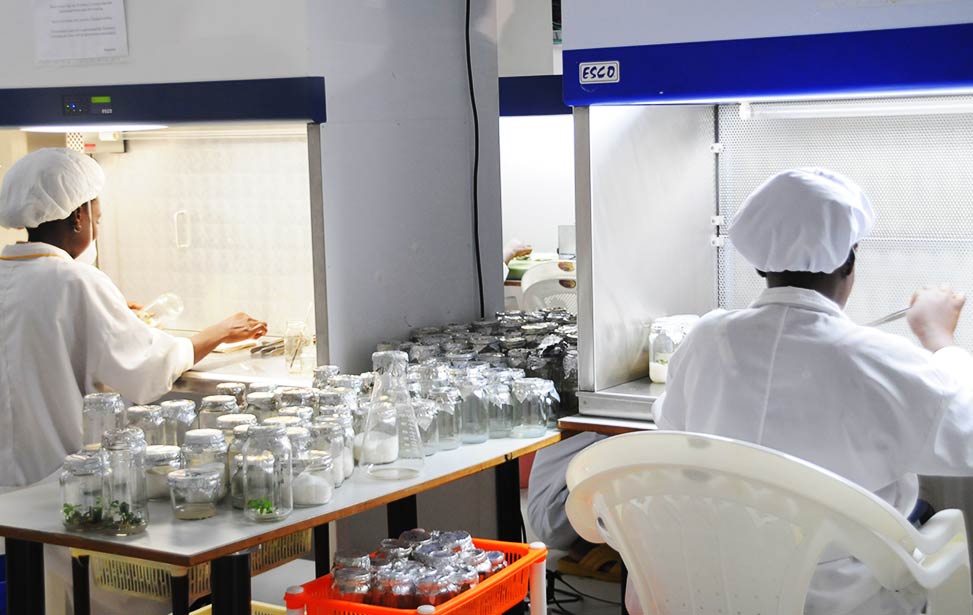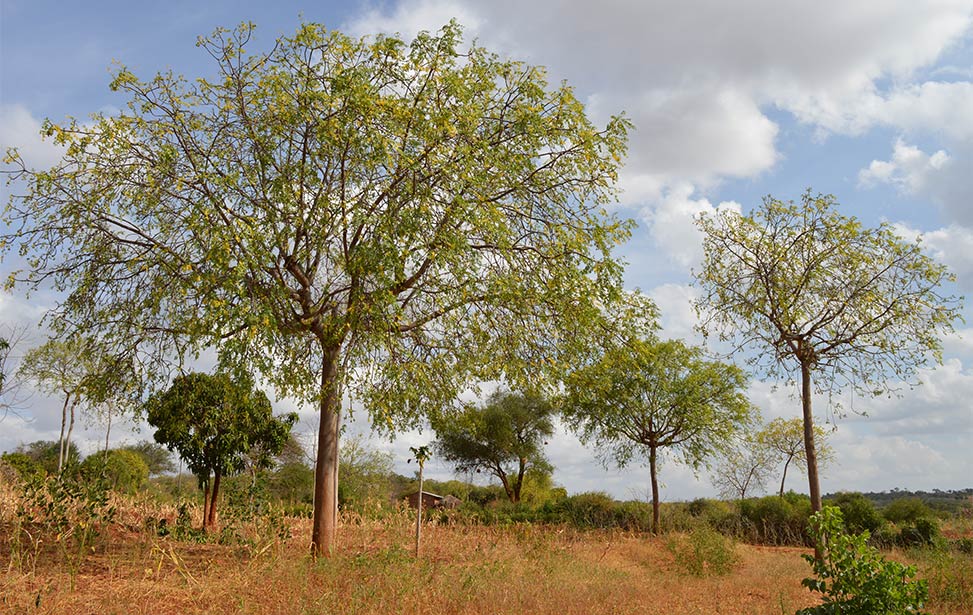
- Jan Vandenabeele
- Jan. 12, 2018
In 2017, we visited Uganda a few weeks for more in-depth research into local tree species and also to start collaboration with farmers for future tree planting. In Uganda, we found another tree species in the same family as our well-known Melia Volkensii, also called mukau in Kikamba. The Ugandan Melia tree is called Melia Azedarach, the Persian Lilac or China berry, known as the Giant Lira in Uganda. The wood quality of this species is comparable to mukau, according to analysis of KEFRI, though more samples have been given for which we still await analysis results. The tree grows faster than mukau, so the profits has potentials to be bigger.
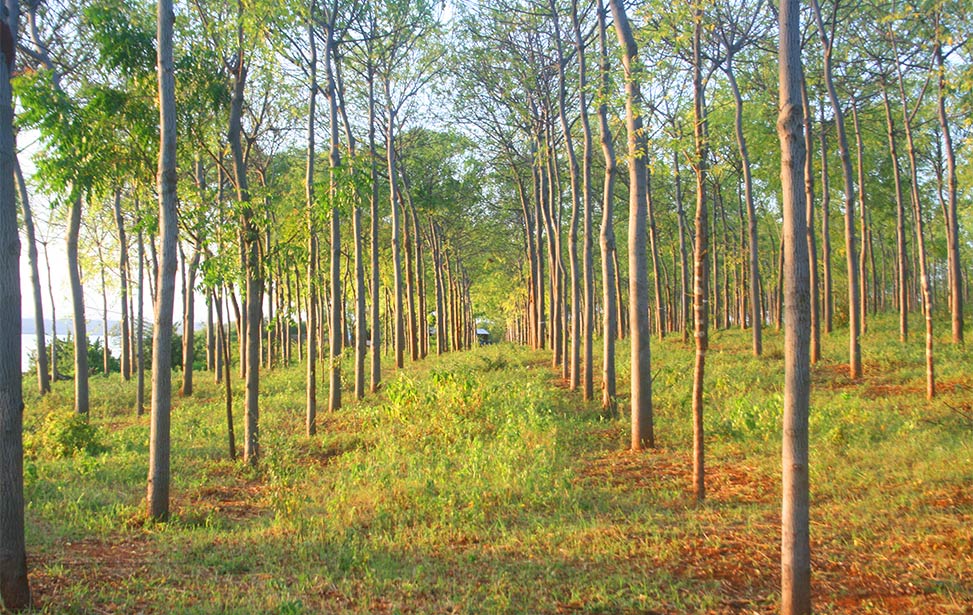
A Better Globe Forestry plantation with ten-year-old Melia volkensii (mukau) in Kenya.
Photo courtesy: Better Globe Forestry
Both species belong to the family of the Meliaceae, or mahogany family. This family is home to other genera like Khaya, Entandrophragma, Cedrela and Swietenia, that produce mahogany timber. The neem tree (Azadirachta indica) also belongs to this family.
Melia volkensii is an East African indigenous species, occurring mostly in Kenya, and to a lesser extent North Tanzania, a bit of Ethiopia and Southern Somalia. It does not naturally occur in Uganda, and even in Kenya, it is limited to the area east of the Rift Valley.
Melia azedarach, on the other hand, originates in Asia and Australia and as an exotic species has been planted all over the world. In Kenya it is mostly planted for shade and as an ornamental tree, because of its purple flowers.
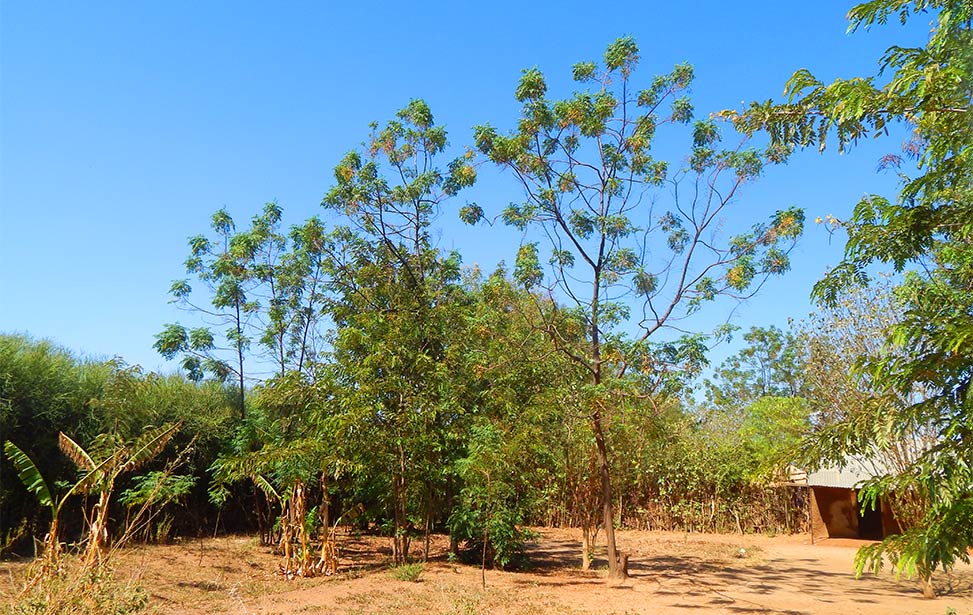
Melia azedarach (Persian Lilac) in Karamoja, Uganda. The tendency of the leaves to cluster is more pronounced in a drier climate.
Photo courtesy: Better Globe Forestry
The main utility of both species is its timber, comparable to true mahogany. Both species grow fast, do coppice (a traditional method of woodland management) and are used for fodder.
| Melia volkensii | Melia azedarach | |
|---|---|---|
| Bark | Grey, farily smooth | Rough and brown when older |
| Leaves | Compounded, many leaflets, light green | Bi-pennate, to 40 cm long, shiny darkish green |
| Flowers | White, in small clusters | Lilac, in bigger clusters up to 25 cm long |
| Fruits | Egg-shaped up to 4 cm long | Smaller, oval, up to 1.5 cm long |
| Growth form | Leaves more regularly distributed | Leaves clustered in small tufts, clustering more pronounced in marginal areas |
| Drought-resistance | MAR range 300-1,000 mm (> 350 mm for commercial growth) | Less drought-resistant, will also grow in areas of high rainfall (>200 mm) |
| Altitude | Range 50-1700 masl | Range 0-200 masl, can support lower temperatures |
| Termite-resistance | Very high | Susceptible to termites |
How do you distinguish both species? Above are some key points.
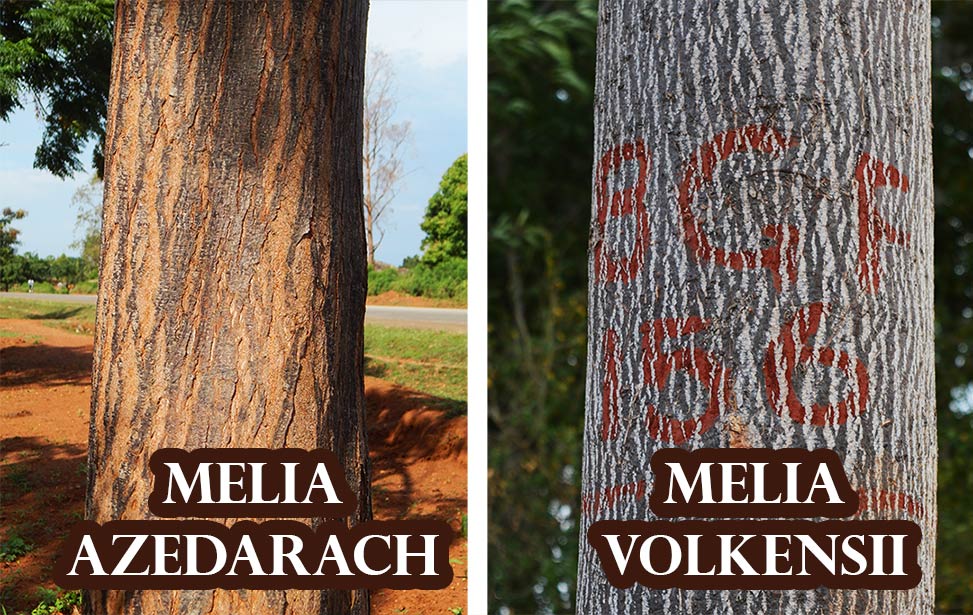
- Source: Better Globe Forestry
- Author: Jan Vandenabeele

